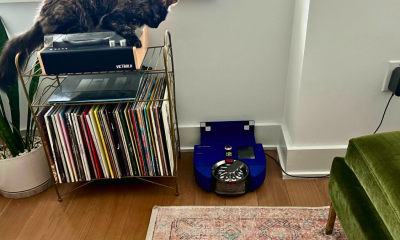Technology
What the future of medicine could look like

How would you like to regrow limbs, or save babies born prematurely? What if a pig could help you with a replacement heart? The future of medicine may make all this possible, and more. Following is a transcript of the video.
In the last century, we’ve eradicated smallpox and learned how to transplant hearts from one human to another. But we still have a long way to go. Here are some medical breakthroughs we may see in the next 50 years.
First up: Saving premature babies. 10% of newborns in America are born too soon. Many die. And those who do survive usually face a lifetime of health issues. But researchers at Children’s Hospital of Philadelphia are working on a solution.
In 2017, they created artificial wombs for premature lamb fetuses. After 4 weeks in the artificial womb, the fetuses had: More well-developed organs, started to grow a wool coat, and some even opened their eyes. In the future, a similar setup could help premature human babies fully develop after birth as well.
Next in line is to solve the organ shortage crisis. Thousands of Americans die each year waiting for a transplant. To end this, a team of researchers are trying to grow human organs inside of pigs. Turns out, pigs have organs that are similar in size to some human organs. And can mature faster — in just 9 months. For comparison, it takes years for those same organs to mature in humans. This would make it possible to grow more organs for transplants, more quickly. But it’s not easy for cells from one species to survive inside another.
Which is why it was a big deal when researchers successfully grew human stem cells inside a pig embryo in 2016. This human-pig hybrid was the first major step in the right direction. But harvesting organs from pigs may not be the only option for transplant candidates. Another group of researchers out of Massachusetts’s Worcester Polytechnic Institute have turned spinach leaves into this [show].
Which could become a way to heal damaged organs, instead of replacing them all together. You see, the spinach leaves have a network of veins that, ordinarily, transport water through the plant. But here, researchers filled the veins with a red dye, similar to blood. And replaced the plant cells with muscle cells from a human heart, which, in the process, turned the plant translucent. The muscle cells then started pumping the red dye through the veins as if they were blood vessels in a real heart!
Now, this is just the beginning. But the researchers envision healing damaged organs and tissue with plant grafts using everything from spinach to broccoli.
Last but not least is perhaps the most ambitious mission of all: regeneration. An estimated 185,000 amputations happen each year in the US. And while prosthetics are growing increasingly advanced, they can’t replace the real thing. Which is why scientists have recently taken an interest in a special type of salamander, called the axolotl. Which can regrow just about anything including limbs, lungs, and even its eyes. And scientists are finally starting to unlock the axolotl’s secret by identifying the genes that are responsible for its regeneration superpowers.
Hoping that, maybe one day, we could genetically engineer a drug that emulates the same regrowth in humans. Whether it’s saving lives or improving them, modern medicine certainly has an interesting future ahead.
-

 Business4 days ago
Business4 days agoAPI startup Noname Security nears $500M deal to sell itself to Akamai
-

 Business7 days ago
Business7 days agoYoshi Mobility has come a long way since gassing up cars on the side of the road
-

 Entertainment4 days ago
Entertainment4 days agoHow to watch ‘Argylle’: When and where is it streaming?
-

 Entertainment4 days ago
Entertainment4 days agoNASA discovered bacteria that wouldn’t die. Now it’s boosting sunscreen.
-

 Business4 days ago
Business4 days agoUS think tank Heritage Foundation hit by cyberattack
-

 Entertainment4 days ago
Entertainment4 days agoDyson 360 Vis Nav robot vacuum review: Dyson should just stick to upright vacuums
-

 Business3 days ago
Business3 days agoTesla drops prices, Meta confirms Llama 3 release, and Apple allows emulators in the App Store
-

 Entertainment4 days ago
Entertainment4 days agoCrypto and taxes: Which forms you need to file



















